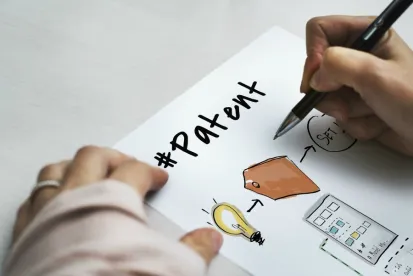It can be difficult to advance prosecution of a U.S. patent application efficiently and effectively after prosecution has been closed and an Advisory Action has been mailed. Various U.S. Patent and Trademark Office (USPTO) programs are available to expedite prosecution (see Mintz’s previous article about speeding prosecution), but a final Office Acton and then an Advisory Action being mailed makes most of those programs unavailable. This article explores various strategies that may allow an applicant to expedite prosecution after the mailing of an Advisory Action.
Advisory Actions do not have prescribed written examiner content, so the content can vary widely by examiner. Per preferred USPTO practice, Advisory Actions should include substantive replies to new arguments regarding particular claim(s) and/or specific prior art. Even if such replies are present, however, they may be confusing or seem insufficient to an applicant. The applicant may therefore be unsure of how to reply to the Advisory Action to move the case most quickly and least costly to allowance.
If claim amendments were submitted in reply to the final Office Action, the Advisory Action should indicate entry or non-entry of the amendments. However, the reason for non-entry may not always be specifically provided in the Advisory Action, which can cause applicant confusion.
Examiner Interview
Discussing an Advisory Action with the examiner in an interview can help clarify ambiguities in the Advisory Action, address errors in the Advisory Action, and help further a common understanding of the applicant’s and examiner’s positions.
Although an interview is possible, an examiner is not required to grant a request for an applicant interview after a final Office Action, and thus after an Advisory Action. However, many examiners are encouraged by their supervisors to conduct interviews at any time if, in their discretion, an interview is seen as an opportunity to practice compact prosecution (see MPEP § 2173.06) and/or help place the application in condition for allowance (see MPEP § 714.12). Requesting an interview to discuss the Advisory Action can thus be successful and help clarify the examiner’s and applicant’s positions. More informed decisions can then be made by the applicant in deciding how to effectively advance the application toward allowance using one or more of the following options.
Petition to the Director
There are two instances where filing a petition under 37 CFR 1.81 can be helpful after the mailing of an Advisory Action:
-
If the applicant reply that prompted the Advisory Action included an argument that the finality of the Office Action was improper, a petition to the Director can be filed under 37 CFR 1.81 requesting review of the Office Action’s finality.
-
If the applicant reply that prompted the Advisory Action included claim amendments that the Advisory Action indicates have not been entered, a petition to the Director can be filed under 37 CFR 1.81 requesting review of the entry’s denial.
As noted in MPEP § 2272, such a petition to the Director “must be filed within the time period for filing a notice of appeal.”
A petition to the Director allows for review of the case by an uninvolved third party at the USPTO, which may be helpful to the applicant. However, per 37 CFR 1.81(f), “[t]he mere filing of a petition will not stay any period for reply that may be running against the application, nor act as a stay of other proceedings.” If the USPTO does not act quickly enough on the petition, an applicant may need to pursue another option to continue prosecution while the petition is pending decision. It can therefore be advisable for an applicant to proactively contact the USPTO about the petition’s status to help ensure timely action on the petition and that the patent application is not abandoned accidentally.
Request for Continued Examination
If claim amendments were submitted in reply to the final Office Action and denied entry in the Advisory Action, filing a Request for Continued Examination (RCE) ensures entry of the claim amendments. An RCE can also allow for any previously submitted claim amendments to be submitted and entered to overcome the rejection(s) maintained in the Advisory Action. RCEs have a relatively high filing fee, and may not be acted on quickly after filing, but this option may be the only way to advance prosecution with claims most likely to be allowed by the examiner.
An interview with the examiner to discuss claim amendments for entry with an RCE may be helpful shortly before or after the RCE is filed. The examiner may be more likely to grant an interview after the Advisory Action is mailed if there are specific claim amendments to be discussed, particularly upon indication by the applicant that an RCE filing is planned or has recently happened. The interview may help the applicant tweak the claim amendments, either with the RCE filing or in a supplemental amendment filed after the RCE has been field, based on the results of the interview. An interview may thus help ensure that the claim amendments examined by the examiner are likely to overcome the prior rejection(s) and move the application closer to allowance. An interview may also prompt the examiner to act more quickly on the RCE than if the interview had not been conducted because the claims are front of mind and/or may prompt an easily prepared Notice of Allowance.
Appeal to the Patent Trial and Appeal Board (PTAB)
Filing a notice of appeal to the PTAB in reply to an Advisory Action is typically not the best way to expedite prosecution. An appeal brief can be time consuming to prepare. Additionally, the PTAB may not decide a case for a year or more, during which time prosecution is on hold. Appeal can also be expensive. However, appeal may be the most effective way for an improper rejection to be dismissed and for prosecution to start anew following third party input from the PTAB. Additionally, claim amendments, affidavits, and/or evidence are possible before or concurrent with the appeal, if the submission meet the requirements of 37 CFR 41.33 (see MPEP § 1206).
Instead of directly appealing to the PTAB, an applicant may first file a pre-appeal request for review with the notice of appeal. The pre-appeal ensures review of the pending final Office Action and applicant’s arguments by a panel of three reviewers, including at least the examiner of record and a supervisor. Pre-appeal can avoid the cost and time delay of direct appeal to the PTAB should the pre-appeal panel decide in favor of the applicant and indicate either forthcoming allowance or re-opening of prosecution. However, claim amendments, affidavits, and evidence are not allowed with or after pre-appeal (see MPEP § 1204.02).
Conclusion
While a variety of options exist for an applicant to speed prosecution after the mailing of an Advisory Action, each application presents a unique situation. Carefully evaluating options for a particular application will help ensure that goals for that particular case are achieved most efficiently.




 />i
/>i

